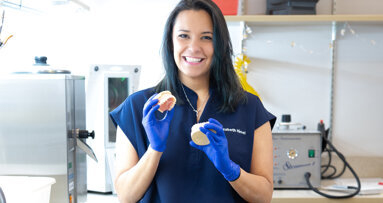CHICAGO, US: Fewer young dentists are buying practices early in their careers—but that does not mean they are abandoning the idea of ownership altogether. According to recent research from the American Dental Association (ADA), the traditional model of early-career practice ownership is shifting as new generations face different economic realities and career expectations. Still, for most, ownership remains a long-term goal.
In its recent study, the ADA Health Policy Institute found that just 21% of dentists who graduated between 2016 and 2020 owned a practice within five to nine years of graduation. That is a sharp decline from 33% ownership among 2011–2015 graduates, and over 60% for those who graduated before 2010. Yet by 15–19 years into practice, ownership levels rise to over 80% across all cohorts, suggesting that today’s early-career dentists may be charting a longer path but one that still leads to practice ownership for most.
Why are younger dentists waiting longer? The reasons appear to be multifactorial. While educational debt is frequently cited, the ADA notes that inflation-adjusted debt levels have remained stable. Instead, dentists may be prioritising financial stability, clinical experience or lifestyle preferences before assuming the responsibilities of ownership. The growing presence of dental support organisations offering salaried employment may also provide an appealing alternative to immediate ownership.
In a related 2020 survey of US paediatric dentistry residents, researchers found strong interest in ownership among these future specialists. Over 61% of respondents reported being “extremely” or “very” interested in owning a practice, and nearly 50% expected to do so within five years of graduation.
However, educational debt was a significant concern. Residents with debt exceeding US$400,000 (€367,005*) were far less comfortable assuming additional business loans. More influential than debt, however, was confidence in practice management. Those who felt well prepared to run a business were over 40% more likely to express high interest in ownership, pointing to the value of including robust business training in dental education.
Besides being influenced by age and specialisation, practice ownership may have strongly gendered dimensions. The ADA study highlighted ongoing gender disparities: early-career male dentists are 16 percentage points more likely to be practice owners than their female counterparts. Though the gap narrows with age, it does not disappear entirely. Also, a 2016 study of dentists in the Canadian province of Ontario found that men were more likely to be practice owners—but when age, work preferences and family responsibilities were considered, the gender gap disappeared. However, these family responsibilities were themselves gendered: female dentists who made career sacrifices for family were less likely to own practices, whereas those with partner support were more likely to pursue ownership. The study reinforces the importance of broader social and educational support in narrowing ownership disparities.
These studies collectively demonstrate that, while the path to dental practice ownership is evolving—delayed by debt, shaped by gender roles and influenced by training and organisational models—it remains a strong aspiration among dentists. Addressing business education gaps and supporting work–life balance may be key to ensuring that the next generation is both willing and ready to lead practices of their own.
Editorial note:
* Calculated on the OANDA platform for 1 May 2020.
Topics:
Tags:
LEIPZIG, Germany: Artificial intelligence (AI) is transforming healthcare across disciplines, and dentistry is no exception. While its clinical applications...
Dr Elizabeth Himel’s path in dentistry is shaped by heritage and guided by a strong sense of purpose. From taking over her father’s private practice to ...
For decades, dentists around the world have profited from high demand for dental clinics by selling to a dental support organisation (DSO), entering ...
As dentists in most countries grapple with soaring inflation, some potential buyers and sellers of dental clinics may have paused to rethink their options. ...
CHICAGO, US: There has been an acceleration of the trends that are contributing to the gradual disappearance of solo private dental practices in the US and ...
Live webinar
Mon. 12 January 2026
9:00 AM EST (New York)
Prof. Judith Jones D.D.S; M.P.H., Prof. Kakuhiro Fukai D.D.S., Ph.D, Dr. Bathsheba (Bethy) Turton
Live webinar
Wed. 14 January 2026
12:00 PM EST (New York)
Dr. Théo Laplane, Dr. Robert Gottlander DDS
Live webinar
Fri. 16 January 2026
12:00 PM EST (New York)
Live webinar
Mon. 19 January 2026
1:00 PM EST (New York)
Philipp Kopp, Michael Seeber
Live webinar
Thu. 22 January 2026
2:00 PM EST (New York)
Dr. Nicola M. Grande DDS, PhD
Live webinar
Wed. 28 January 2026
8:00 AM EST (New York)
Live webinar
Wed. 28 January 2026
11:00 AM EST (New York)
Prof. Dr. Jan-Frederik Güth



 Austria / Österreich
Austria / Österreich
 Bosnia and Herzegovina / Босна и Херцеговина
Bosnia and Herzegovina / Босна и Херцеговина
 Bulgaria / България
Bulgaria / България
 Croatia / Hrvatska
Croatia / Hrvatska
 Czech Republic & Slovakia / Česká republika & Slovensko
Czech Republic & Slovakia / Česká republika & Slovensko
 France / France
France / France
 Germany / Deutschland
Germany / Deutschland
 Greece / ΕΛΛΑΔΑ
Greece / ΕΛΛΑΔΑ
 Hungary / Hungary
Hungary / Hungary
 Italy / Italia
Italy / Italia
 Netherlands / Nederland
Netherlands / Nederland
 Nordic / Nordic
Nordic / Nordic
 Poland / Polska
Poland / Polska
 Portugal / Portugal
Portugal / Portugal
 Romania & Moldova / România & Moldova
Romania & Moldova / România & Moldova
 Slovenia / Slovenija
Slovenia / Slovenija
 Serbia & Montenegro / Србија и Црна Гора
Serbia & Montenegro / Србија и Црна Гора
 Spain / España
Spain / España
 Switzerland / Schweiz
Switzerland / Schweiz
 Turkey / Türkiye
Turkey / Türkiye
 UK & Ireland / UK & Ireland
UK & Ireland / UK & Ireland
 International / International
International / International
 Brazil / Brasil
Brazil / Brasil
 Canada / Canada
Canada / Canada
 Latin America / Latinoamérica
Latin America / Latinoamérica
 China / 中国
China / 中国
 India / भारत गणराज्य
India / भारत गणराज्य
 Pakistan / Pākistān
Pakistan / Pākistān
 Vietnam / Việt Nam
Vietnam / Việt Nam
 ASEAN / ASEAN
ASEAN / ASEAN
 Israel / מְדִינַת יִשְׂרָאֵל
Israel / מְדִינַת יִשְׂרָאֵל
 Algeria, Morocco & Tunisia / الجزائر والمغرب وتونس
Algeria, Morocco & Tunisia / الجزائر والمغرب وتونس
 Middle East / Middle East
Middle East / Middle East
























































To post a reply please login or register